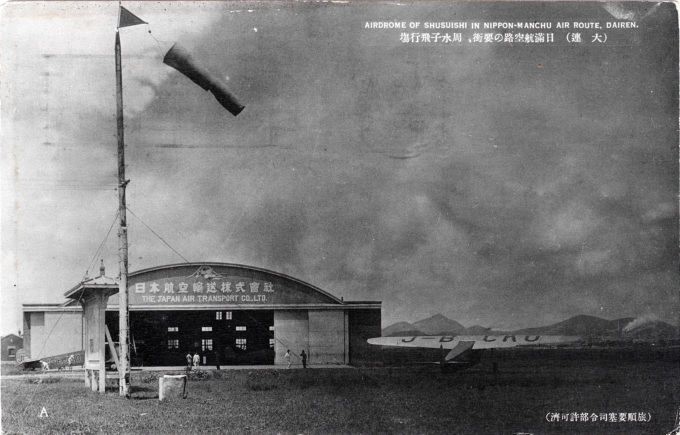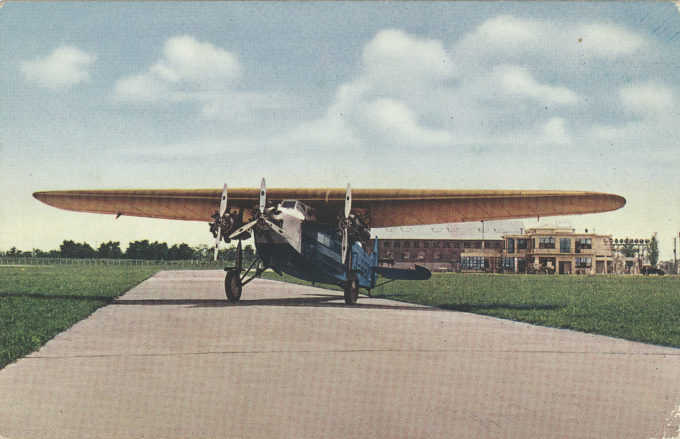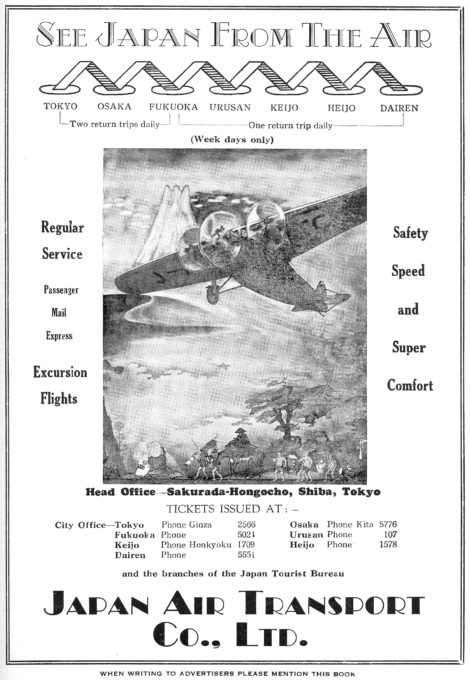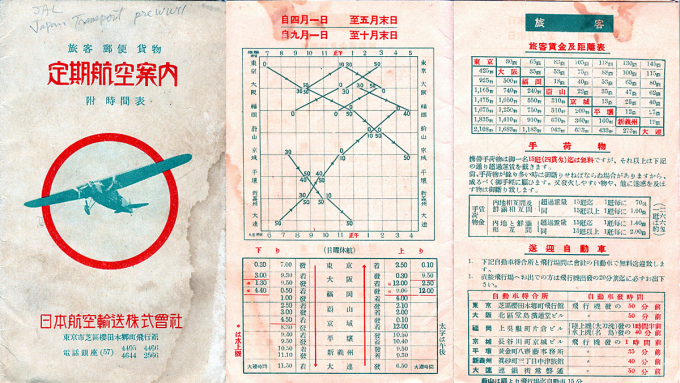
“Airdrome of Shusuishi in Nippon-Manchu Air Route” [sic]. Japan Air Transport Corporation’s Shusuishi Airdrome, Dairen, Manchukuo, c. 1933. The aircraft pictured are Fokker Super Universal single-engine passengers transports (J-EJEO, left, acquired in October, 1930; J-BCAO, right, acquired in September 1930). JATC also flew the Fokker F.VII tri-motor passenger transport (see below). Japanese commercial air transportation was pioneered by the Japan Air Transport Corporation, which was organized in 1928 and enjoyed a near monopoly of Japanese air services for ten years.
See also:
JATC Airspeed As.6 Envoy, 1936
Haneda Airfield (Pre-war)
On 30 October 1928, the Japanese government established the Japan Air Transport Corporation (JATC) – Nihon Koku Yuso K.K. – as the national flag carrier under the Ministry of Communications. JATC absorbed the privately-owned Japan Air Transport Institute and two other small companies, and began scheduled passenger services in 1929. It initially used the Imperial Japanese Army air base at Tachikawa as its terminal in Tokyo. JAT later moved to Haneda Airport, which was completed in August 1931.
During the early 1930s, its aircraft were often chartered by the military for missions in Asia (and often fee gratis), especially after the September 1931 invasion of Manchuria. This role declined as military transport missions in China were taken over by three new carriers that JATC helped to establish (Manchukuo National Airways in 1932, Huitong Airways in 1936, and China Airways in 1938). These subsidiary companies were joint ventures between JATC and the puppet governments of Manchukuo and the Provisional Government of the Republic of China in occupied North China.
In 1938, its peak year, JATC carried nearly 70,000 passengers, representing 2.6 percent of the world’s passenger traffic.
In December 1938, the government established a new airline, Imperial Japanese Airways, as a monopoly for all civil aviation. Japan Air Transport Corporation was merged into the new company.

Fokker F.VII at Haneda Airfield, Tokyo, c. 1930.
“The inauguration of a regular passenger service on the Osaka-Oita via Sakai, Takamatsu, Imaharu and Beppu route by the Japan Air Transport Co. of Osaka on May 1. ’28, and a similar service on the Osaka-Tokyo and Tokyo-Sendai routes by the Tozai Teiki Kokukai of the Asahi Shimbun on August 27 same year is memorable in the history of civil aviation of Japan as marking the dawn of the practical utilization of aerial navigation for commercial purpose.
“The establishment of the Air Transport Co. in 1928 also stands out prominent in the history of Japanese civilian aviation. It marks the advent of regular commercial stage. The Co. is backed with a capital of ¥10,000,000, and the Government, besides guaranteeing profit of 8x, undertakes to grant about ¥20 millions in eleven years as subsidy.”
– Civilian Aviation, The Japan Year Book, 1929



